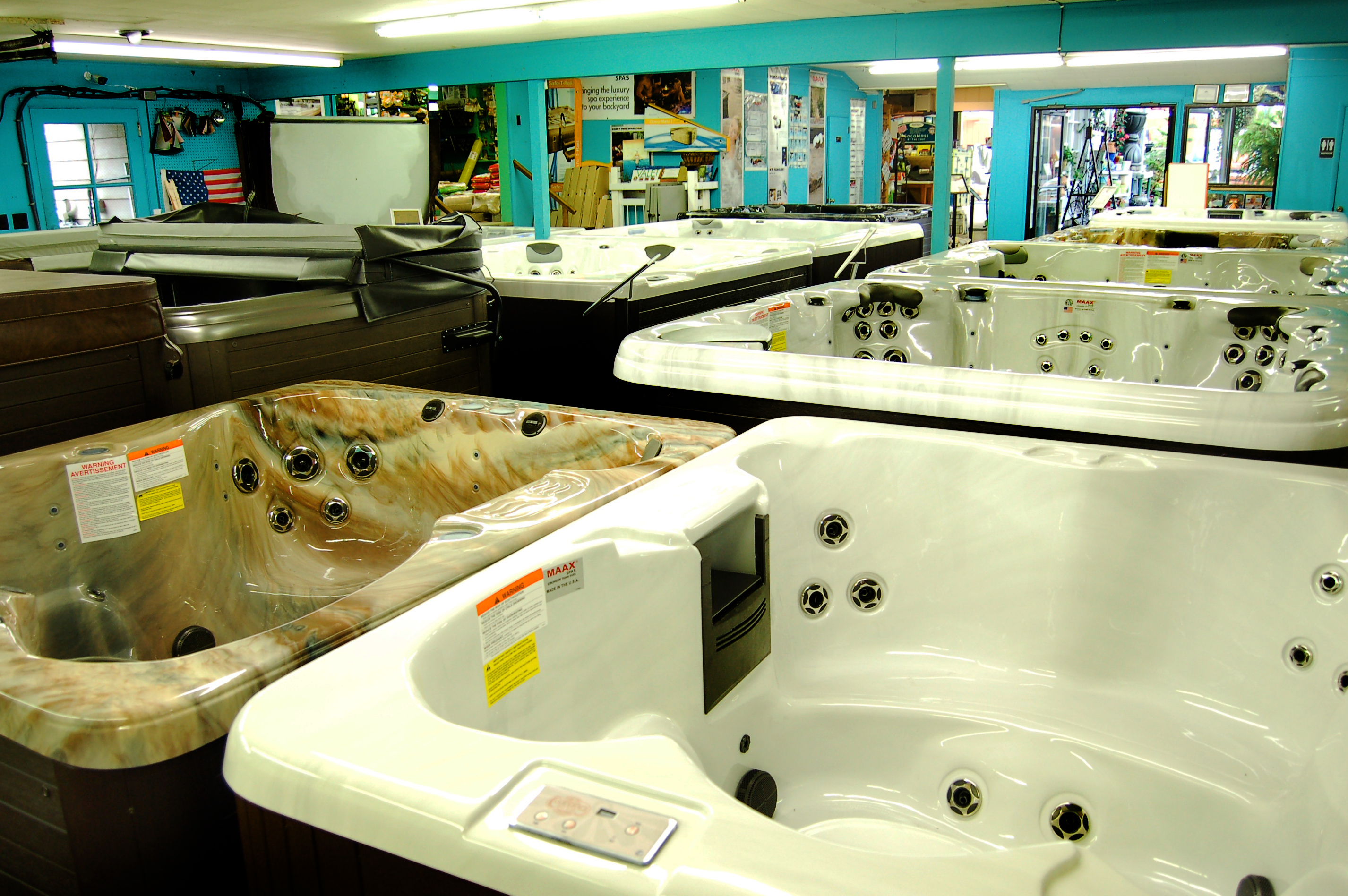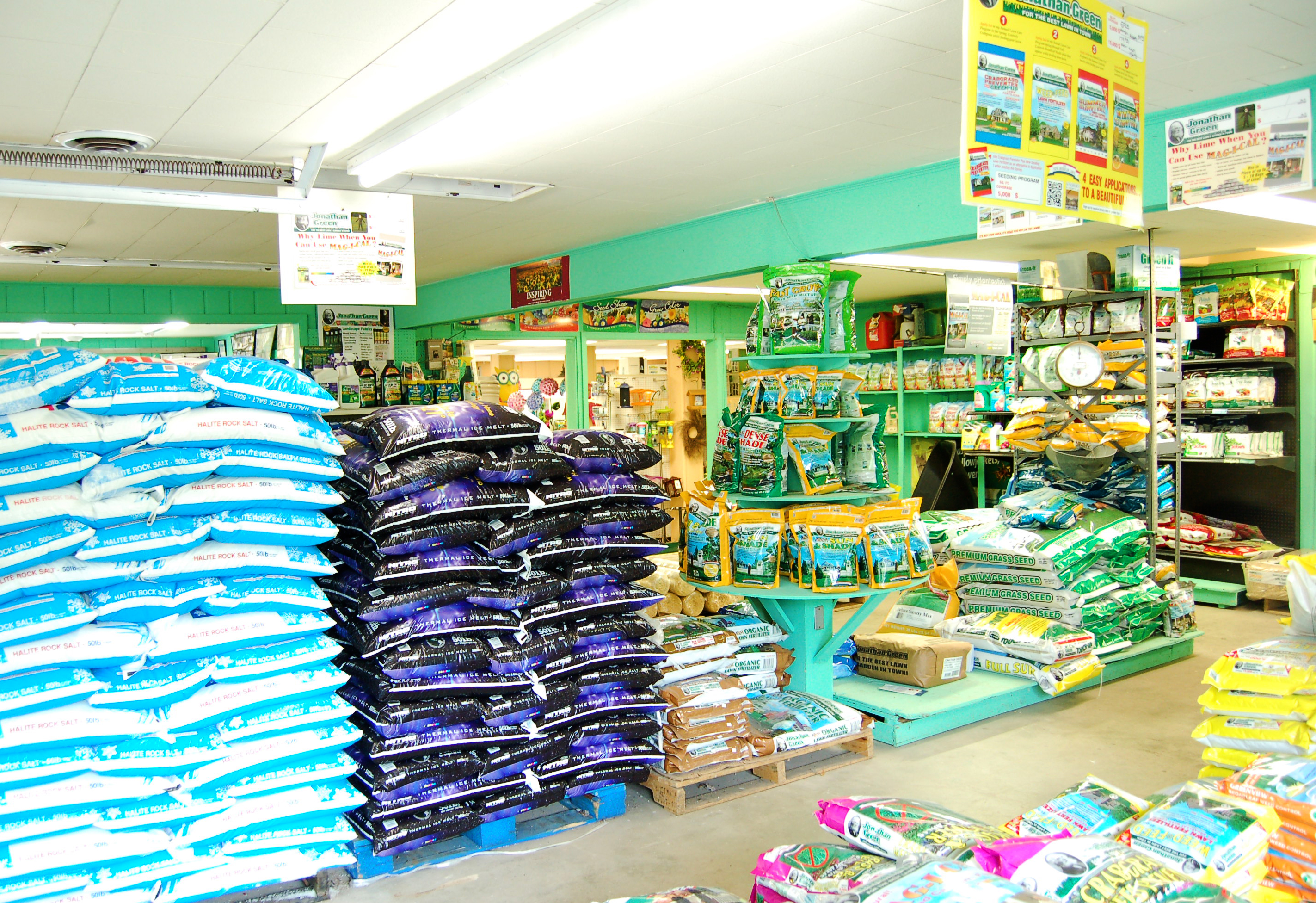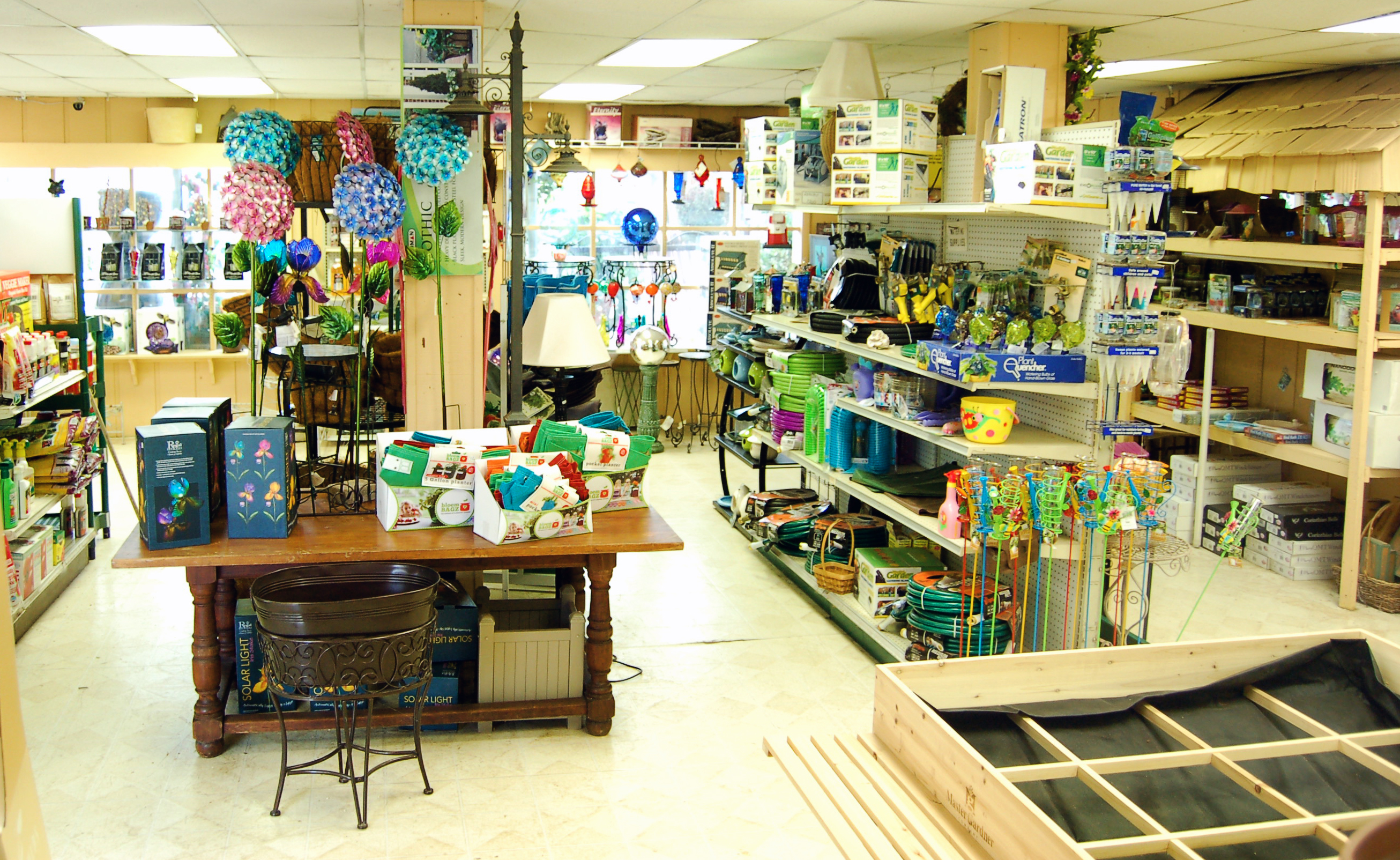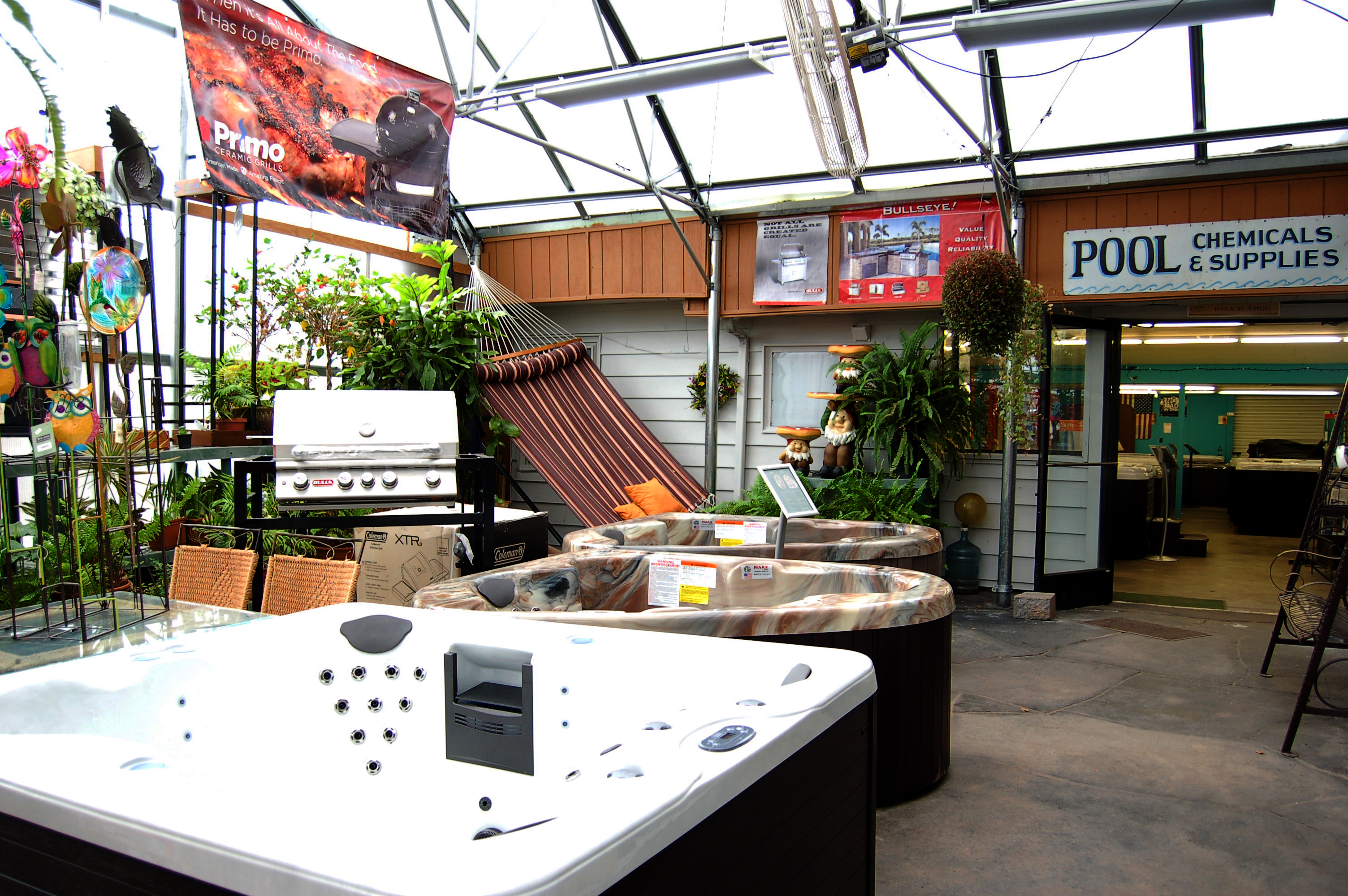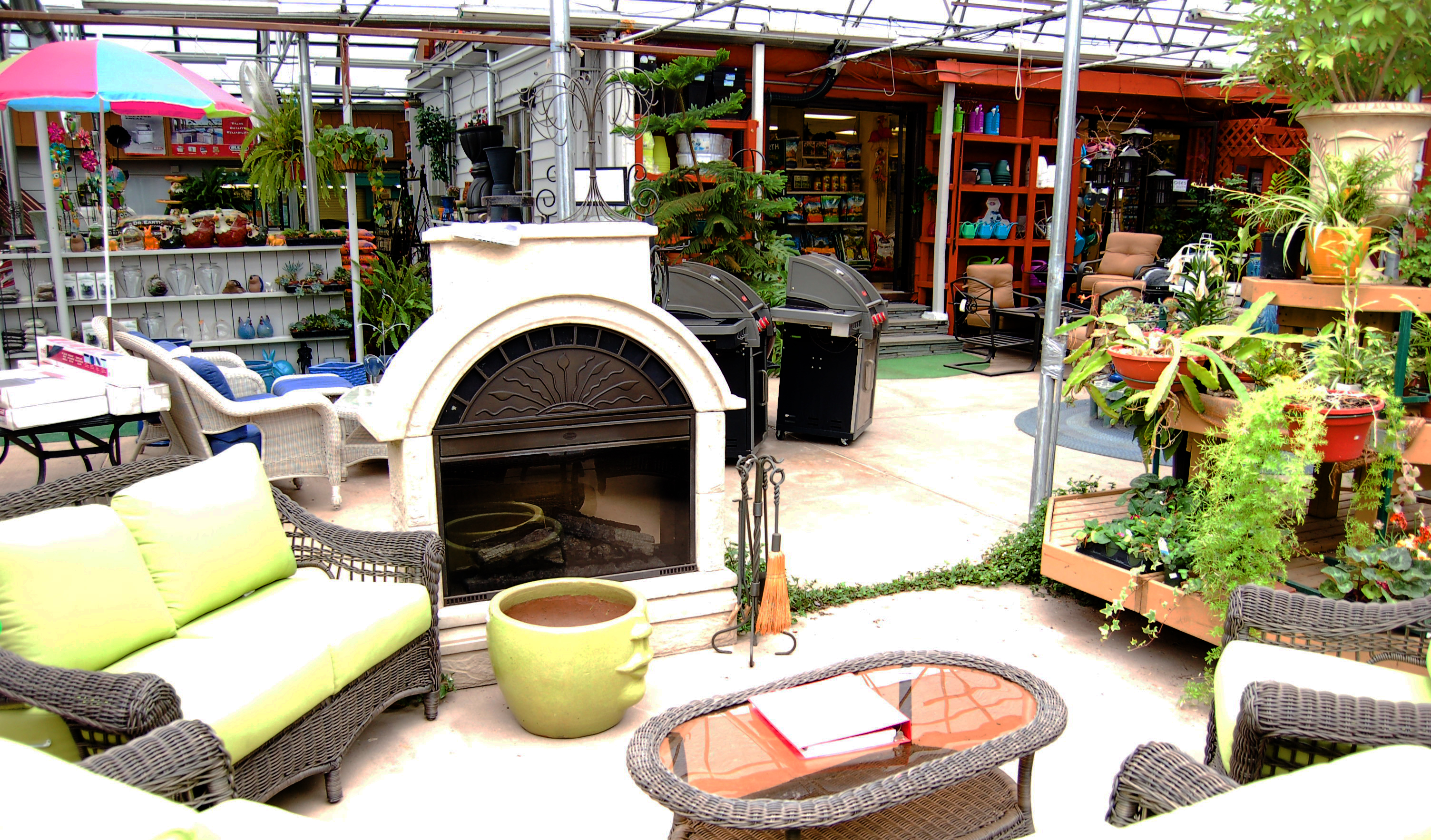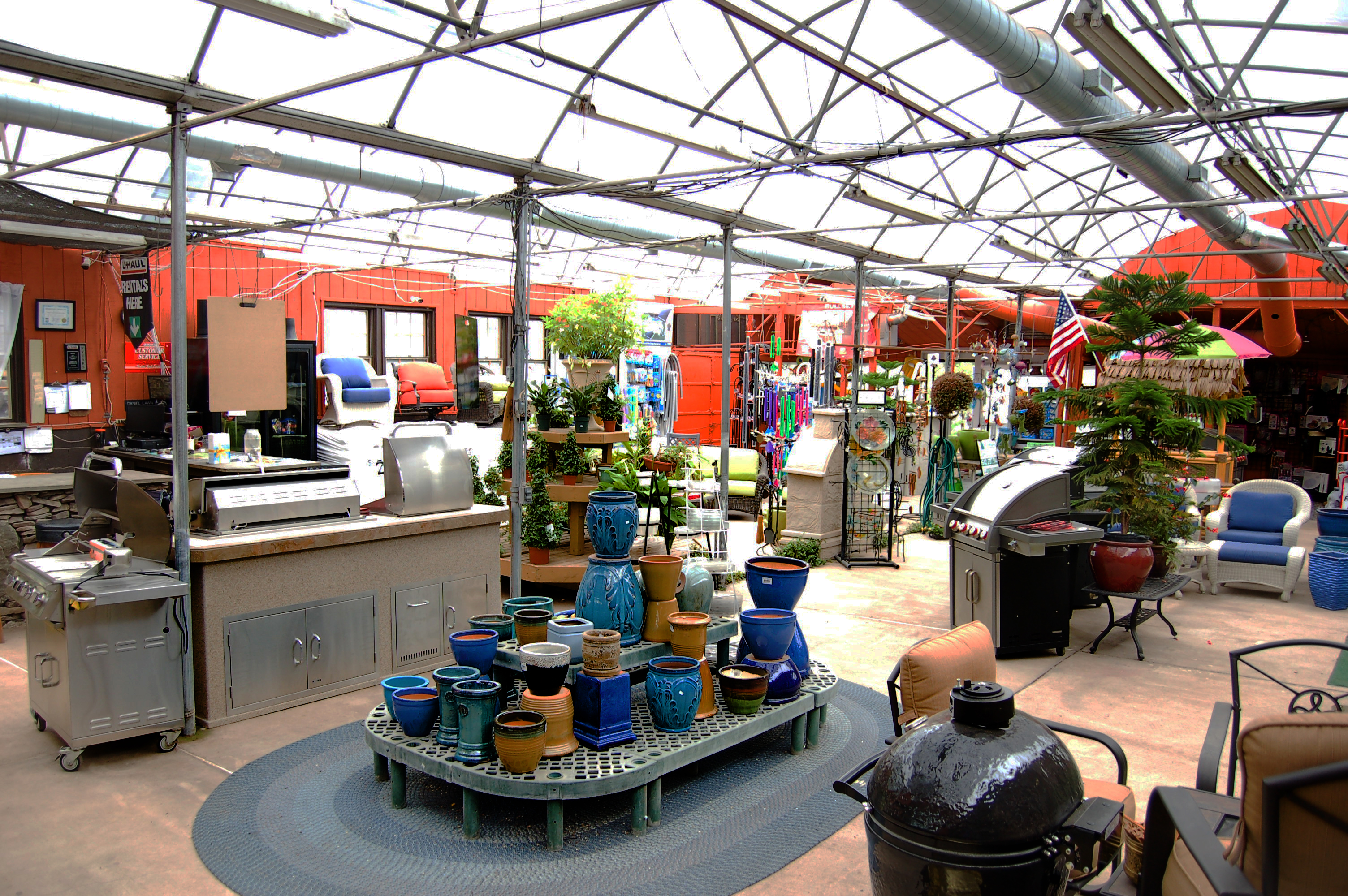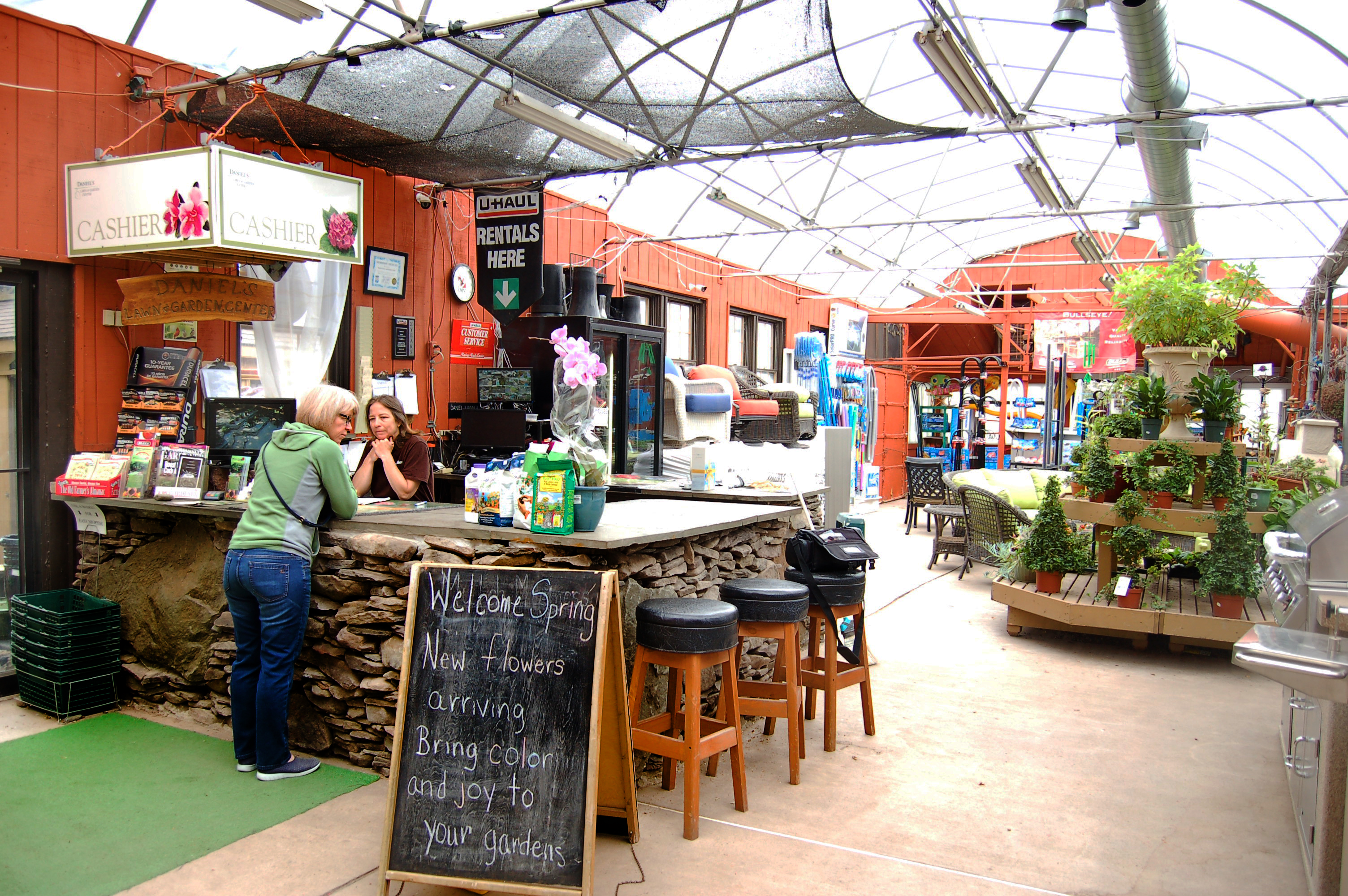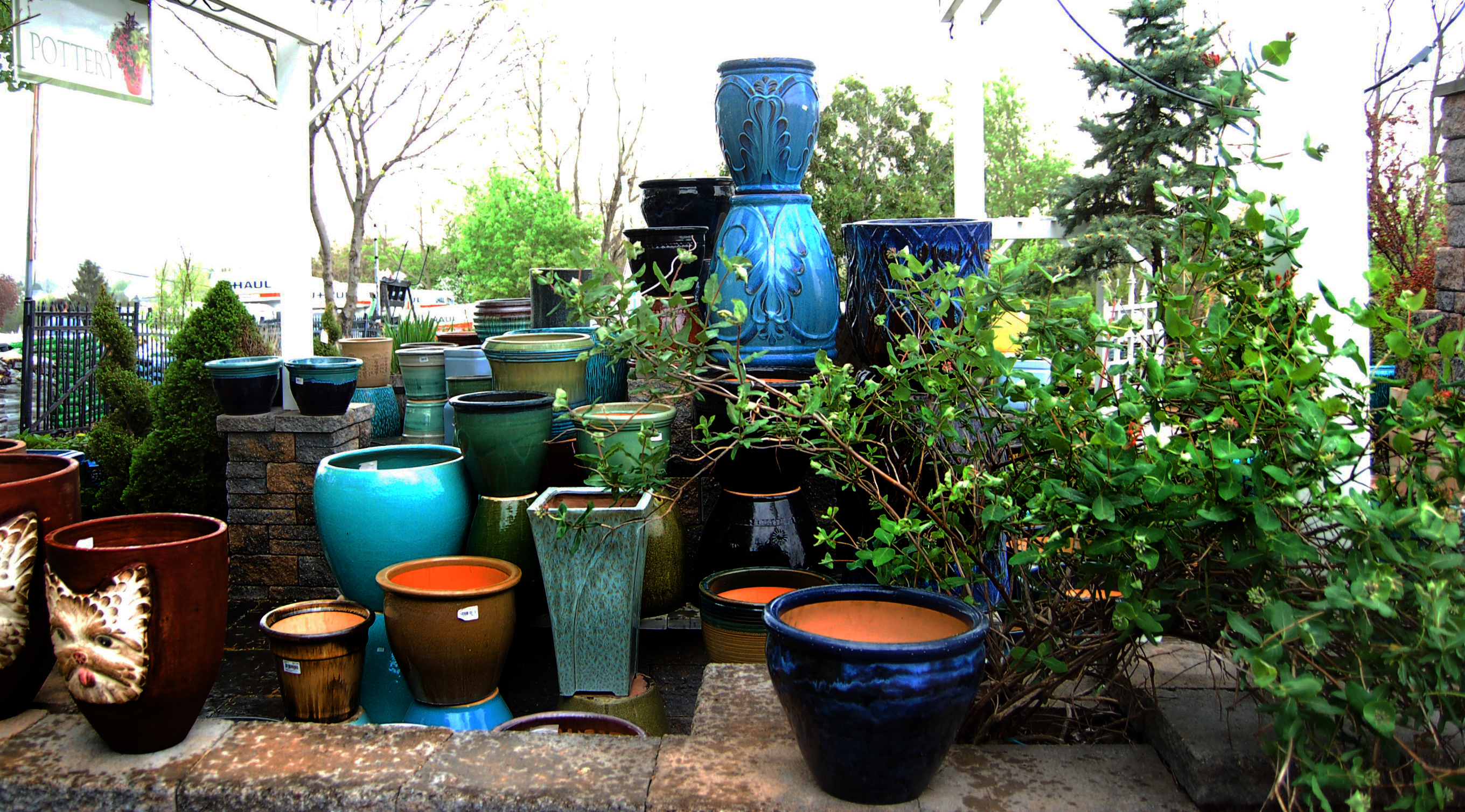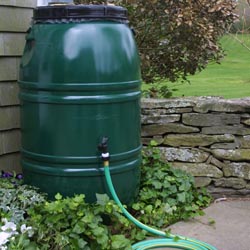New Fall Decor Arrival!
New item for fall! Pumpkin chimeneas! Stop by to see our unique selection of this new product line now available at Daniels!


Birdscaping
BIRDSCAPING
As wildlife habitats are threatened by development, the creation of a bird-friendly environment that provides food, water and shelter is crucial to the existence of our wild bird population. Caring for our feathered-friends is an educational and enjoyable activity for the entire family that brings beauty and song to our lives.
Benefits of Wild Birds
Birds are great guests to have in your yard, garden or landscape, and they provide more benefits than many homeowners and gardeners realize. Wild birds can…
- Control insects by feasting on both flying and crawling insects, as well as spiders, slugs, snails and other creepy-crawlies.
- Pollinate plants by flitting from flower to flower as they seek out insects or eat seeds, taking pollen along between blooms.
- Manage weeds as they consume copious amounts of weed seeds before the seeds ever have a chance to sprout.
- Control rodents when raptors visit the yard in search of mice, rats, gophers, voles or other unwanted pests.

Attracting Backyard Birds
Fortunately, it is easy to attract a wide variety of backyard birds when you offer them what they need most – food, water and shelter.
Food for Birds
Wild birds rely on both natural and supplemental food supplies so it is important to consider both when birdscaping. Feeding the birds is most important in the winter when natural food is scarcer, but they will visit feeders at any time of year. Migratory birds require additional food in the spring and fall as they pass through the region and nesting birds will utilize feeders in the summer.
Tips:
- Provide a variety of natural foods for birds by planting berry bushes, seed-bearing flowers, nectar-rich flowers and sunflowers. Leave windfall fruit on the ground for birds to nibble. Minimize pesticide use so birds can feast on insects as well.
- Add supplemental feeders to your yard, such as birdseed feeders, suet feeders and nectar feeders. Clean feeders weekly to avoid mold that can be dangerous to birds, and be sure feeders are full when birds need them most.

Water
Improve your backyard bird habitat by adding water. Birds require a constant supply of clean water for drinking and bathing. This is especially important in late summer, when water is scarce, and in the winter, when it is frequently frozen.
Tips:
- Place bird baths in a protected location safe from predators, and keep the baths filled at all times so a fresh supply of water is constantly available.
- Scrub off algae as soon as it is appears and thoroughly was the bird bath each week to minimize feces contamination or other messes in the water.
- Provide motion for greater attraction by using a bubbler, wiggler, dripper or fountain. Birds will see the sparkles of the moving water and will hear the splashes from great distances, so more birds will visit.
- Use Mosquito Dunks to safely prevent mosquito larvae in warm weather. A clean bird bath with moving water will also harbor fewer insects.
- Add an outdoor-safe submersible heater to the bath in winter to keep the water liquid instead of frozen, or consider using a fully heated bird bath during the coldest months.

Shelter
It is important to offer safe and comfortable shelter for your wild birds to nurture their young, protect them from predators and shield them from the elements. Planting evergreen trees and shrubs and providing bird houses, along with roosting boxes and pockets, are all beneficial additions to your birdscape.
Tips:
- Choose both deciduous and evergreen landscaping trees and shrubs to offer birds different types of shelter in all seasons.
- Minimize pruning to give birds denser, more secure shelter to take advantage of when they feel threatened.
- Plant in layers and create thicket-like pockets or corridors in your landscape so birds can move around freely without feeling exposed.
- Supplement the shelter in your yard with good quality bird houses, winter roost boxes or nesting pockets to give birds even more options to stay safe and secure.
When you meet birds’ needs for food, water and shelter, your birdscape will soon be home to a fun and friendly flock of backyard birds.
Join us in the fight against breast cancer!

Daniel’s Lawn and Garden Center, 1457 Sumneytown Pike, Harleysville, proudly presents their 5th Annual Pink Day, Saturday, June 11, 2016. A family fun day to benefit Susan G. Komen Race for the Cure in the fight against breast cancer.
Last year we rose over $1200 for breast cancer research and are looking to do even better this year. Festivities begin at 11:00 am with face painting and a moon bounce. Pony rides with Chica, the sweetest pony are from 12:00 to 2:00.
There will also be FREE 10 minute chair massages on site by Knots In Knead of Red Hill, PA.www.knotsinknead.net from 11:30am-2pm. Also, you can enter for a chance to win a gift certificate for a FREE 30 minute massage!
New this year is a Pollinator Program at noon by a local bee expert. He’ll show you how to bring pollinators to your garden, which benefits everyone.
Additionally there will be Pink Day Only specials throughout the store including 20lb propane tank refill for $11.99 and 50% off trees and shrubs.
Wear your pink and join us on June 11 and support Daniel’s Lawn and Garden Center’s efforts to help find a cure for breast cancer, a cancer that affects way too many Moms, sisters, wives and friends. Any questions about this event please call us at 610-287-9144 or visit www.danielslawnandgarden.com. See you there. Think Pink!!!
HEALTHY SOIL, HEALTHY PLANTS
The key to successful gardening is “healthy soil.” This basic principle of organic gardening applies to all plants. Quite simply, when you feed the soil the proper nutrients, you let the soil feed the plants. So how do you “feed” the soil? First, you need to understand some elementary information about your soil and why it is so important, and then you can take steps to improve it.
To start, you should determine the soil texture by moistening the soil and rubbingit between your thumb and fingers to determine it’s “feel.” Sands are gritty and will barely hold together; clay can be squeezed into a firm shape; and silt will act in a way to allow particles to cling together. Sandy soils tend to dry out quickly because they contain high amounts of soil air. Oppositely, clay soils have a tendency to pack together, shutting out air and water. The best garden soil, “loam,” has moderate amounts of sand, silt and clay. Generally, soil in our area tends to be clayey. This condition can be improved by adding a soil conditioner, gypsum or slate particles. For sandy soils, humus should be added to help retain moisture and nutrients.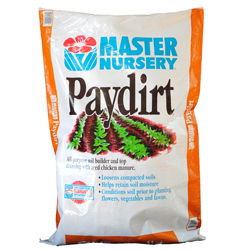
Next, you must evaluate the soil structure. Soil structure is affected by soil pH, the amount of humus and the combination of minerals in the soil. Ideal soils allow soil particles to clump together with air spaces between them for water drainage as well as oxygen consumption and carbon dioxide release from plant roots. The best way to improve soil structure is to add high amounts of organic matter like humus, dehydrated manure, composted manure, mushroom compost, alfalfa meal, peat moss, or worm castings.
You will also need to take a soil sample, to measure the pH and amounts of nitrogen, phosphorus and potassium in the soil as well as other nutrients. This will help determine exactly what the soil needs. Your local Master Nursery Garden Center will help you read the results and determine what to add to your soil and how much. Generally, a pH of 6.0 to 7.0 is acceptable. If your pH is lower than this, your soil is too acidic and requires lime to be added. If your soil is low in organic matter, it will often have a high pH level. All plants require a proper balance of nutrients – nitrogen (N), phosphorus (P) and potassium (K). Soils lacking any one of these elements will not produce healthy plants. Refer to the Organic Fertilizer Chart for suggested amendments.
When dealing with poor or improperly balanced soils, obtaining “healthy” soil may take two to five years to acquire. The best thing you can do to supplement your soil program is to use various organic fertilizers to meet your plants’ needs and regularly add organic matter; we suggest Bumper Crop Soil Amendments, and Fertilizers. Black Forest, Gardener’s Gold, Pay Dirt and Pay Dirt Plus are all excellent choices as soil amenders that will continue to help the soil structure as well as create biological activity that is also a vital part of developing productive soil.
Key Words
Soil Texture – The proportional amount of sand, silt and clay in the soil.
Soil Structure – The arrangement of soil particles in the soil.
Soil pH – The measurement of acidity or alkalinity of the soil.
Organic Matter – Various forms of living and dead plant and animal matter.
DETERRING DEER

DETERRING DEER
Strictly vegetarian, an average adult deer can eat between 4 and 6 pounds of food per day. Not only are they big eaters, they aren’t the slightest bit picky. Deer eat over 500 different varieties of plants, but, if they’re really hungry, they’ll eat just about anything in the garden or landscape.
Short of a fence, the next best thing is to take advantage of two weaknesses of deer – they’re creatures of habit and they are easily scared. Anything you can do to mix up their habits or make them think there is danger nearby might be enough to make them go elsewhere in search of food. But, deer aren’t foolish. If they realize the danger isn’t real, they will return, therefore, you must rotate any repellents or scare tactics you try.
| DEER CONTROLS | PRODUCT | HOW IT WORKS |
| Milorganite | Fertilizer | Odor |
| Fencing/Netting | Physical barrier | Tactile |
| Scarecrow | Motion Activated Sprinkler | Tactile |
| Liquid Fence | Spray | Odor/Taste |
Plants Deer Won’t Like
Deer in large herds with insufficient food will eat almost any garden vegetation, particularly in harsh winters. You can minimize deer damage by choosing plants that are the least favored and avoiding those that are the most liked so plan your garden accordingly. Among their favorites are azaleas, rhododendrons, yews, roses, Japanese maples, winged euonymous, hemlocks and arborvitae. The following is a list of plants rarely damaged by deer.
TREES
Chinese Paper Birch
Colorado Blue Spruce
Dragon Lady Holly
Douglas Fir
Japanese Cedar
San Jose Holly
Serviceberry
Scotch Pine
SHRUBS & CLIMBERS
Barberry
Bearberry
Blueberry Elder
Boxwood
Caryopteris
Common Buckhorn
Creeping Wintergreen
European Privet
Japanese Andromeda
Japanese Plum Yew
Leucothoe
Rose of Sharon
Russian Olive
ANNUALS & PERENNIALS
Ageratum
Anemone, Japanese
Basket of Gold
Bergenia
Bleeding Heart
Columbine
Dame’s Rocket
Deadnettle
Dill
Euphorbia
Ferns
Foam Flower
Foxglove
Jack-in-the-pulpit
Lamb’s Ears
Larkspur
Lavender
Marigold
Monkshood
Nasturtium
Oriental Poppy
Ornamental Grasses
Pachysandra
Plumbago
Purple Coneflower
Rhubarb
Rock Cress
Rose Campion
Geranium, Scented
Russian Sage
Sage
Snapdragon
Sweet Alyssum
Tansy, Common
Threadleaf Tickseed
Thyme
Toadflax
Tobacco Plant
Yarrow
Mother’s Day Savings!
MAKE MOM FEEL SPECIAL THIS WEEKEND! SHOP OUR EXTENSIVE SELECTION OF HANGING BASKETS, ANNUALS, PERENNIALS, INDOOR PLANTS AND POTTERY!

Mother’s Day is just around the corner this Sunday, May 8, and nothing says, “You’re the best,” quite like a living, breathing reminder of all the life and love mothers pour into our hearts. Plant gifts serve as a symbol of growing love, appreciation and gratitude for the number one lady in all of our lives.
From tropical foliage to traditional blooms, capture all you want to say with a lovely indoor plant for mom to centrally display as a reminder of how much you care. Show her how amazing she is with a Mother’s Day plant to brighten her day. After all, she’s always been there to put some extra sunshine in your step – go ahead and return the favor.
SAVE $5 OFF ANY $30 PURCHASE
Stop on by!
Daniel’s Lawn & Garden Center is one of the area’s leading Garden, Landscape, Hot Tub and Pool supply companies. Owner Stu Strauss has been operating the Harleysville, PA location since 1987. When Stu purchased the garden center, his vision was to offer an array of services and products that help beautify outdoor spaces. Today, Daniel’s offers premium plants, shrubs and trees, soil, mulch and stone as well as hot tubs, pool supplies and other outdoor living equipment. We also provide FREE estimates and have delivery and installation options for most products.
Daniel’s Lawn & Garden Center is your one stop shop for everything outdoors! Some of the major brands of outdoor living products we offer are MAAX SPAS, BULL BBQ OUTDOOR KITCHENS and much more!
